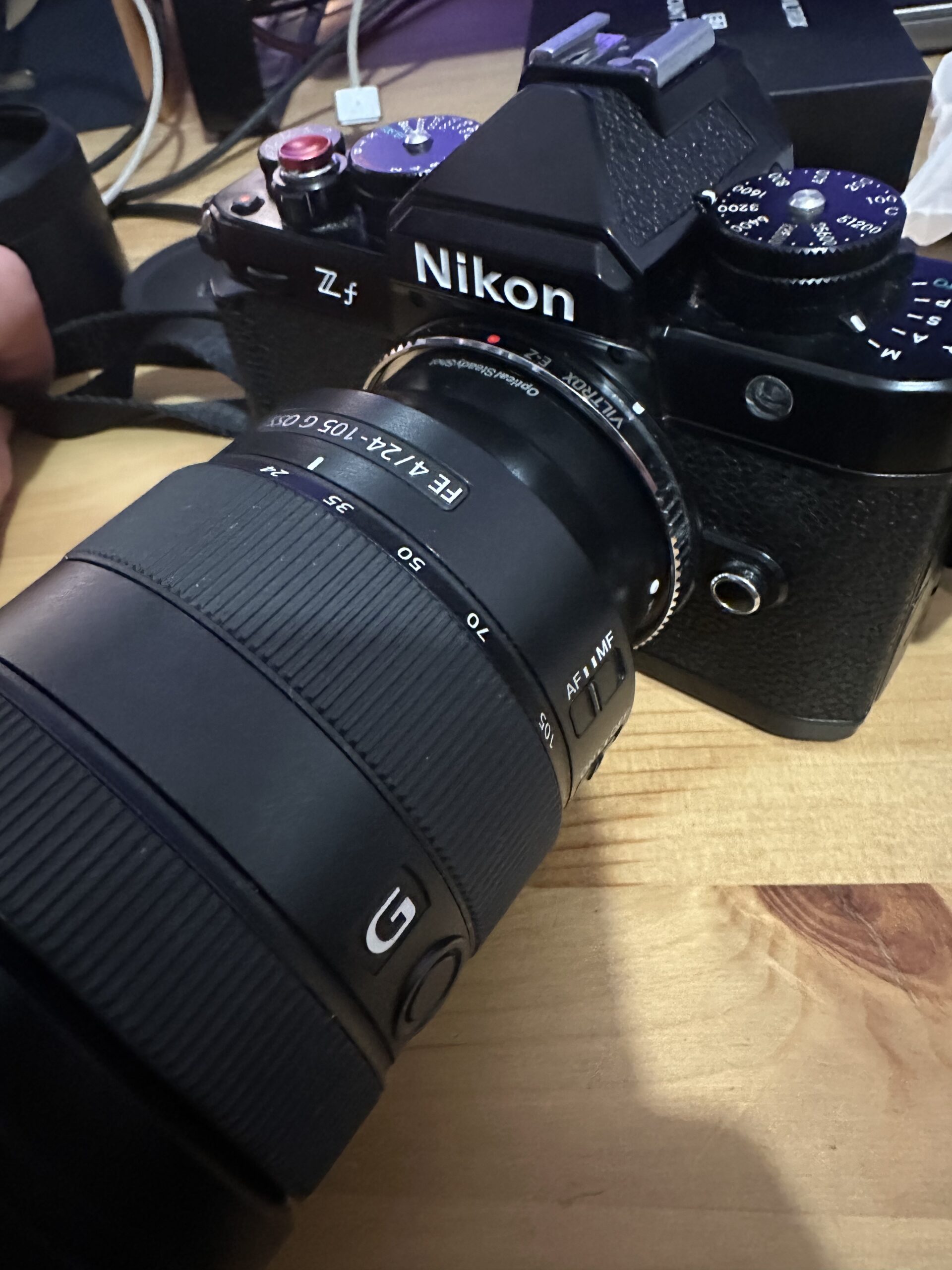If you’ve ever found yourself straddling two camera ecosystems, for example, Sony and Nikon, you know what it’s like to accumulate far too many lenses, and own double ups. That’s where the Viltrox EF-Z Adapter steps in. I’ve been using it for a few weeks now, and I wanted to know:
Is it as EASY to use as people say?
And could I have come up with a better pun to start this post with?
Let’s dive into it.
Why I Wanted This Adapter in the First Place
I shoot with both Nikon and Sony, for reasons that make sense to me but maybe not to anyone else. When I first jumped into the mirrorless full-frame world, I went with the Nikon Z6. It offered 10-bit external video, cheaper lenses, and it wasn’t Canon. (The Canon EOS-R’s heavy 4K crop and the shirtless travel bros shilling it gave me the ick.)
But over time, my collection of Sony lenses grew—and I began wishing I could use them on my Nikon body. The Techart and Megadap adapters existed, but at nearly the cost of a prime lens, it was hard to justify. Then came the Viltrox EF-Z, priced at just $99 USD. At that price, I figured it was worth it, even if just for the laughs.
Build Quality: Good Enough for the Price
Let’s get this out of the way: the adapter feels… fine. Not premium, but functional.
- No rubber grommets for weather sealing.
- The lens release button is a bit mushy.
- Lenses don’t “click” into place with the reassuring firmness you’d expect on a native Sony body.
However, the adapter itself clicks into the Nikon body securely, and its grip shape makes removing it surprisingly easy. It’s a mixed bag, but not a dealbreaker.
Autofocus Test: Supported Lenses First
Let’s talk real-world performance. I tested a range of lenses—both supported and unsupported. Here’s how they stacked up.
Sony 28mm f/2 (Supported)
- Autofocus is decent but not the fastest.
- Some minor hunting at the end of focusing.
- Works okay for stills with wide point tracking, though foreground objects may throw it off.
Tamron 70–180mm f/2.8 (Supported)
- Snappy and reliable. This one’s on the official compatibility list.
- Performs well at close focus and zoom ranges.
- A real standout.
Sony 55mm f/1.8 Zeiss (Supported)
- One of my favorite lenses.
- Works very well. Fast and reliable.
- No noticeable issues.
Sony 24–105mm f/4 G (Supported)
- Performance is nearly identical to using it on a native Sony body.
- Works in 3D tracking, video AF, and point tracking.
- Yes, you can do wobbly dolly zooms from an office chair.
Body Stabilization: A Bit of a Mystery
Viltrox claims that lens-body stabilization works after firmware updates. But in practice, I couldn’t tell. The display on my Nikon didn’t change when toggling it, and results didn’t seem dramatically different. If it’s working, it’s quietly effective. If not, well—the Z6’s in-body stabilization still does a good job.
Unsupported Lenses: Hit and Miss
Samyang 18mm (Unsupported)
- Not great.
- Slow autofocus, sometimes lagging to lock onto subjects.
- Usable, but not enjoyable.
Sigma 70mm f2.8 Macro (Supported)
- Surprisingly competent.
- Not a speed demon, but reasonable focus times for a macro lens.
Video Performance
Video autofocus is generally very good, especially with supported lenses. Not as lightning-fast as native Sony performance, but certainly usable for most casual and even semi-professional applications.
So, Should You Get It?
If you’re looking to use Sony E-mount lenses on a Nikon Z camera, the Viltrox EF-Z Adapter is genuinely impressive for the price.
- It’s not perfect, especially with older or unsupported lenses.
- But for $99, it brings a lot of lenses into your Nikon workflow with minimal compromise.
- If you don’t want to shell out for the Techart, and can live with some quirks, this is a no-brainer.
Another helpful sign is the constant iteration you can see out of chinese lens companies. Firmware updates keep appearing, and that’s a good sign that performance will only improve.
Final Verdict
I’m now happily using my Zeiss 55mm, 28mm f/2, and more on my Nikon Zf. It might not be a professional-grade solution, but for enthusiasts, hybrid shooters, or people like me who enjoy playing gear-Tetris it’s a pretty easy recommendation.
Just don’t shoot in the rain.


